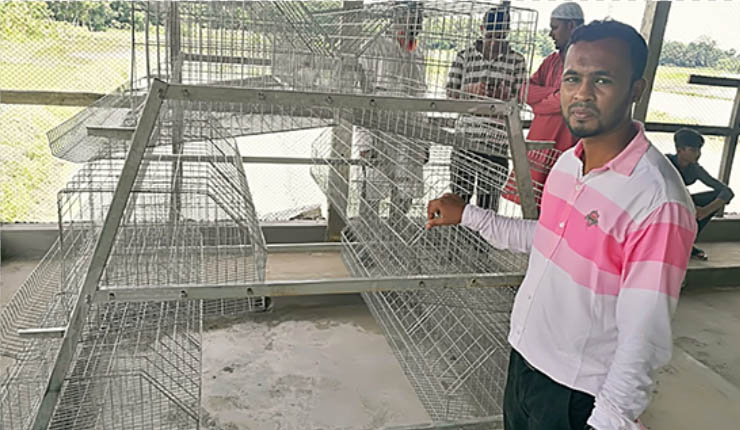chicken scalder
Dec . 29, 2024 04:29 Back to list
chicken scalder
Understanding Chicken Scalders The Key to Efficient Poultry Processing
In the poultry industry, proper processing methods are essential for maintaining hygiene, ensuring quality, and maximizing efficiency. One critical piece of equipment in this chain is the chicken scalder. As a critical step in poultry processing, understanding the role of a chicken scalder sheds light on its importance and the processes involved in preparing chickens for consumption.
What is a Chicken Scalder?
A chicken scalder is a machine used in the processing of poultry, primarily to remove feathers from chickens after they have been slaughtered. The scalding process involves immersing the birds in hot water, which serves multiple purposes. The primary one is to loosen the feathers, making them easier to pluck. Scalding also helps in effectively cleaning the skin and can reduce bacterial load, contributing to the overall hygiene of the meat.
The Scalding Process
The scalding process involves careful temperature regulation. Typically, the water temperature in a scalder ranges from 140°F to 160°F (60°C to 71°C). The exact temperature and duration of exposure can vary based on the type of poultry and the desired result. Scalding is a balance; if the water is too hot, it can lead to skin damage, which compromises the quality of the meat. Conversely, if it’s too cool, feathers will not come off easily, creating more work for processors.
Once the chickens are immersed in the scalding water for the appropriate duration, they are transferred to a plucker. Here, mechanical fingers or rubber fingers work to pull out the feathers, which can be a labor-intensive step if not properly prepared by scalding.
Choosing the Right Scalder
chicken scalder

When selecting a chicken scalder, several factors come into play. The scalability and capacity of the equipment are crucial, particularly for large production facilities. The type of scalder chosen—batch, continuous, or immersion—depends on the processing flow rate and operational needs. Batch scalders are suitable for smaller operations, while continuous scalders are often preferred in larger processing plants for their efficiency.
The Importance of Hygiene
Hygiene is paramount in any poultry processing facility, and the scalder contributes significantly to this objective. The hot water used in scalding not only aids in feather removal but also helps to reduce the number of pathogens on the surface of the chicken. However, processors must maintain their scalder equipment meticulously. Regular cleaning and maintenance reduce the risk of cross-contamination and ensure that the scalder operates efficiently.
Innovations in Scalding Technology
Advancements in technology continue to enhance the efficiency of chicken scalders. Modern scalders often incorporate features such as continuous water flow, temperature control systems, and automatic monitoring to further ensure consistent performance. Some systems even utilize steam or infrared technology to improve feather removal while maintaining meat quality.
Additionally, the move towards sustainability has led to innovations aimed at minimizing water usage and enhancing energy efficiency. As consumers increasingly demand transparency and sustainability in food production, poultry processors are adopting more environmentally friendly practices, and the scalder is evolving to meet these requirements.
Conclusion
A chicken scalder may appear to be a simple piece of equipment, but its role in poultry processing is vital. By understanding the importance and function of scalding in the removal of feathers, processors can ensure a more efficient, hygienic, and high-quality production line. As technology continues to advance, the equipment used in poultry processing, including scalders, will evolve, becoming more efficient and aligned with sustainability goals. The chicken scalder not only represents an essential step in the processing chain but also reflects the ongoing changes and improvements in the poultry industry. Its effective operation is fundamental to the success of poultry processing, ultimately affecting the quality of chicken products available to consumers worldwide.
-
Automatic Feeding Line System-Pan Feeder Nipple Drinker|Anping County Yize Metal Products Co., Ltd.
NewsJul.29,2025
-
Hot Sale 24 & 18 Door Rabbit Cages - Premium Breeding Solutions
NewsJul.25,2025
-
Automatic Feeding Line System Pan Feeder Nipple Drinker - Anping County Yize Metal Products Co., Ltd.
NewsJul.21,2025
-
Automatic Feeding Line System Pan Feeder Nipple Drinker - Anping County Yize Metal Products Co., Ltd.
NewsJul.21,2025
-
Automatic Feeding Line System - Anping Yize | Precision & Nipple
NewsJul.21,2025
-
Automatic Feeding Line System - Anping Yize | Precision & Nipple
NewsJul.21,2025






